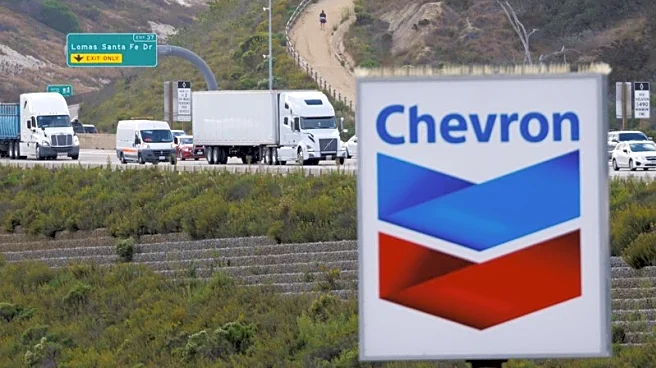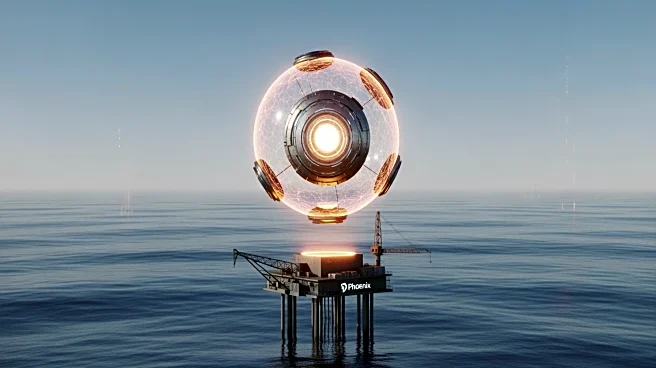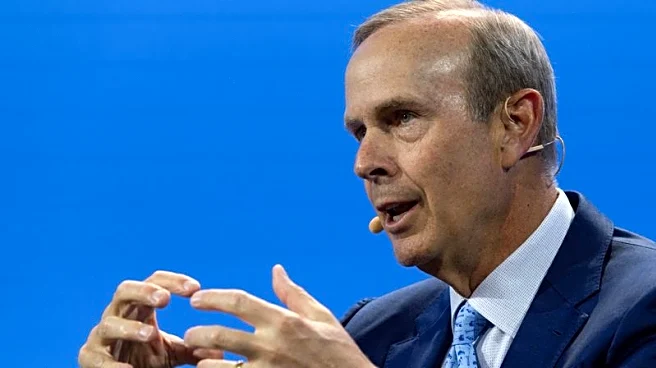What's Happening?
Chevron has unveiled a strategic five-year plan aimed at prioritizing shareholder returns and enhancing free cash flow rather than expanding oil and gas production volumes. The U.S. supermajor plans to increase its oil and gas output by 2% to 3% annually
through 2030, while improving return on capital employed by over 3% at $70 per barrel Brent. The plan includes deeper cost cuts, synergies from the Hess acquisition, and reduced capital expenditure. Chevron aims to boost synergies from the Hess acquisition to $1.5 billion and achieve structural cost reductions of $3 billion-$4 billion by the end of 2026. The company also plans to keep its capex and dividend breakeven below $50 per barrel Brent through 2030. Chevron's approach to new energies is pragmatic, focusing on its core strengths, including delivering its first AI data center power project in West Texas by 2027.
Why It's Important?
Chevron's strategic shift towards enhancing shareholder returns and cash flow growth reflects a broader industry trend where oil companies are increasingly focusing on financial stability and value creation over production volume. This approach is significant as it aligns with investor expectations for higher returns and sustainable growth. By maintaining capital and cost discipline, Chevron aims to strengthen its financial position and resilience in a volatile energy market. The emphasis on synergies from acquisitions and cost reductions highlights the company's commitment to operational efficiency. Additionally, Chevron's investment in new energy projects, such as AI data center power, positions it as a forward-thinking player in the evolving energy landscape, potentially influencing industry standards and practices.
What's Next?
Chevron's plan to deliver its first AI data center power project in West Texas by 2027 marks a significant step in its new energy strategy. This project is expected to support U.S. leadership in Artificial Intelligence, indicating Chevron's role in the technological advancement of energy solutions. The company's focus on maintaining a capex and dividend breakeven below $50 per barrel Brent through 2030 suggests a cautious approach to financial management amid fluctuating oil prices. As Chevron implements its strategic plan, stakeholders, including investors and industry analysts, will closely monitor its execution and impact on shareholder returns and market positioning.
Beyond the Headlines
Chevron's strategic focus on shareholder returns and cash flow growth may influence other oil and gas companies to adopt similar value-driven approaches, potentially reshaping industry priorities. The company's investment in AI data center power projects highlights the intersection of energy and technology, suggesting a future where energy companies play a crucial role in technological infrastructure development. This shift could lead to new partnerships and collaborations between energy and tech sectors, fostering innovation and sustainability.














